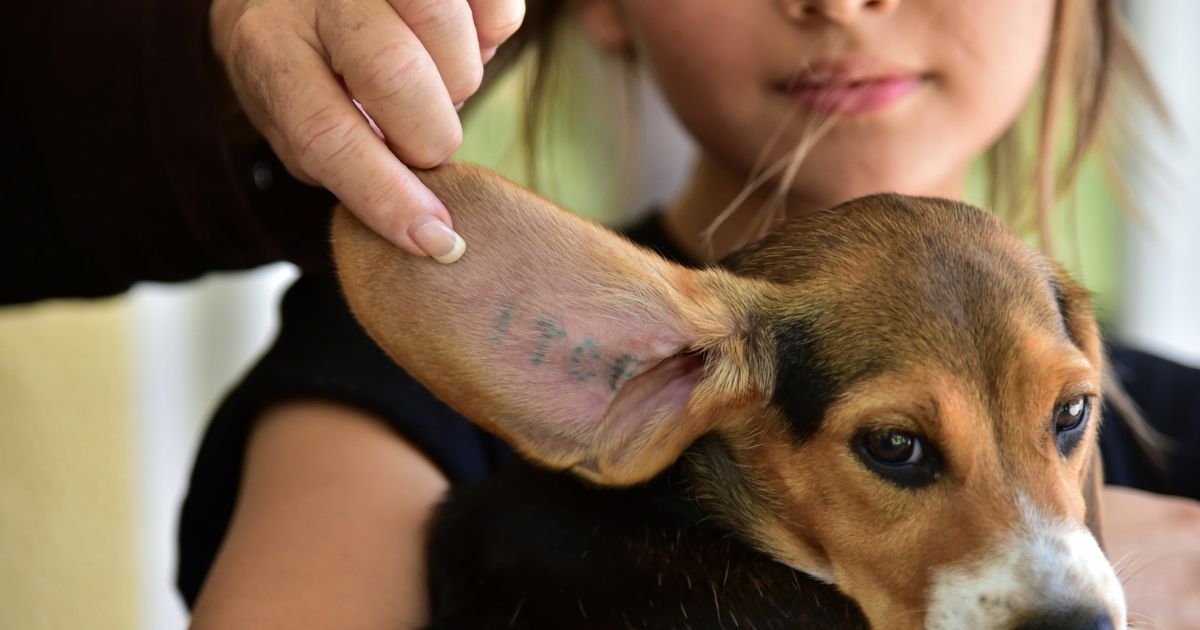Beagles have long been recognized for their significant contributions to scientific research. Their use in research can be attributed to their unique characteristics that make them ideal for various studies. This introduction explores the reasons why beagles are chosen as research subjects and the implications of their involvement.
It also delves into the ethical considerations and regulatory guidelines surrounding the use of beagles in research. Additionally, this introduction sheds light on the current trends in beagle research and their impact on medical advancements.
Understanding the public perception of beagle research is crucial in shaping the future of their involvement in scientific studies. By examining the historical context and the scientific benefits, this exploration aims to provide a comprehensive understanding of why beagles are used for research.
Key Takeaways
- Beagles have a long history of involvement in scientific investigations and are one of the most commonly used research animals today.
- Beagles have unique characteristics such as their acute sense of smell, adaptability, and ease of handling, making them highly valuable in research settings.
- Beagles are valuable models for studying human diseases due to their genetic similarity to humans, small size, and gentle temperament.
- Ethical considerations in Beagle research include ensuring animal welfare, minimizing harm, seeking alternatives to animal testing, and complying with regulatory guidelines.
History of Beagle Use in Research

- The use of beagles used for research can be traced back to the 19th century. These small, friendly dogs have been employed in various scientific studies due to their size, temperament, and ease of handling. Beagles, with their acute sense of smell and ability to adapt to different environments, have proven to be valuable assets in experiments related to drug development, toxicology, and behavioral research.
- Their long history of involvement in scientific investigations solidifies their position as one of the most commonly used research animals today.
Beagles’ Unique Characteristics for Research
Beagles possess unique characteristics that make them an ideal choice for research, allowing scientists to further explore their exceptional sense of smell, adaptability, and ease of handling in various scientific investigations.
- Sense of smell: Beagles have one of the most acute senses of smell among all dog breeds, which makes them valuable in detecting and identifying specific odors or substances.
- Adaptability: Beagles are known for their ability to adapt to different environments and conditions, making them suitable for experiments conducted in various settings.
- Ease of handling: Beagles are generally docile, friendly, and easy to handle, making them cooperative subjects for researchers to work with.
These unique characteristics make Beagles highly valuable in research settings, particularly when studying human diseases and the development of potential treatments.
Beagles as Models for Human Diseases
The unique characteristics possessed by Beagles, such as their exceptional sense of smell, adaptability, and ease of handling, make them valuable models for studying human diseases. Their genetic similarity to humans, combined with their small size and gentle temperament, allows researchers to conduct experiments and investigations that can aid in the development of treatments and therapies for various diseases. The table below provides an overview of some human diseases that Beagles have been used to study:
| Disease | Purpose of Study |
|---|---|
| Cancer | Investigating tumor development and treatment options |
| Cardiovascular Disease | Understanding heart conditions and improving treatments |
| Diabetes | Studying the mechanisms of insulin regulation |
| Neurological Disorders | Investigating diseases like Alzheimer’s and epilepsy |
| Respiratory Diseases | Examining lung function and developing therapies |
Beagles serve as valuable tools in medical research, contributing to our understanding of human diseases and helping to advance healthcare for both humans and animals.
Ethical Considerations in Beagle Research
Ethical considerations play a crucial role in the use of Beagles for research purposes. Here are three key ethical considerations to keep in mind:
- Animal Welfare: Researchers must ensure the well-being and humane treatment of Beagles throughout the research process, including proper housing, nutrition, and veterinary care.
- Minimizing Harm: Efforts should be made to minimize the pain and suffering experienced by Beagles during experiments, through the use of anesthesia and analgesics when appropriate.
- Alternatives to Animal Testing: Ethical considerations also involve actively seeking alternative methods to reduce the use of Beagles in research, such as in vitro testing or computer simulations.
Regulatory Guidelines for Beagle Research
One key aspect of conducting research involving Beagles is adhering to regulatory guidelines. These guidelines help ensure that the welfare and ethical treatment of the animals are upheld during the research process. Compliance with these guidelines is crucial for maintaining the integrity and validity of the research findings. Researchers must follow strict protocols for the care, housing, and handling of the Beagles, as well as obtain proper approvals and permits. Now, let’s explore the alternatives to Beagle research.
Alternatives to Beagle Research

There are several viable alternatives to conducting research using Beagles. These alternatives include:
- In vitro models: Cell cultures and tissue cultures can be used to study the effects of drugs and chemicals, reducing the need for animal testing.
- Computer simulations: Advanced computer models can simulate the physiological and biochemical processes in the human body, allowing researchers to predict the effects of drugs and treatments.
- Human-based studies: Clinical trials involving human volunteers provide valuable insights into the safety and efficacy of new drugs and treatments.
These alternatives offer more ethical and accurate methods of research, reducing the reliance on animal testing and promoting the well-being of animals. Transitioning to these alternatives is a positive step towards more humane and effective research practices. Now, let’s explore the current trends in beagle research.
Current Trends in Beagle Research
A significant trend in beagle research involves the exploration of innovative methodologies and technologies to enhance the efficiency and effectiveness of experimentation. Researchers are constantly seeking new ways to improve the welfare of the animals involved while also maximizing the quality of data obtained.
This includes the development of non-invasive techniques, such as imaging and biomarker analysis, as well as the use of advanced statistical methods to analyze and interpret results. These advancements aim to ensure that beagle research remains ethical, reliable, and relevant in the ever-evolving field of scientific inquiry.
Beagle Research and Medical Advancements
Beagle research has led to significant medical advancements by utilizing innovative methodologies and technologies. These advancements include:
- Development of new drugs and therapies: Beagles have played a crucial role in testing the efficacy and safety of new drugs and therapies, leading to breakthrough treatments for various diseases.
- Understanding diseases and their mechanisms: By studying beagles, researchers have gained valuable insights into the development and progression of diseases, helping them identify potential targets for treatment.
- Improving surgical techniques: Beagles have been instrumental in refining surgical techniques, allowing for more precise and effective procedures.
These advancements highlight the importance of beagle research in advancing medical knowledge and improving human health. Now, let’s explore the public perception of beagle research.
Public Perception of Beagle Research
The public perception of beagle research is influenced by various factors that shape opinions and attitudes towards this practice. Some individuals view beagle research as necessary for medical advancements and improving human health, while others express concerns about the ethical treatment of animals and advocate for alternative research methods. Public perception is also shaped by media coverage and advocacy efforts by animal rights organizations. Understanding these factors is essential when considering the future of beagle use in research.
Future of Beagle Use in Research

Frequently Asked Questions
Are There Any Other Dog Breeds Commonly Used in Research Besides Beagles?
Yes, besides beagles, other dog breeds commonly used in research include Labrador Retrievers, Golden Retrievers, and German Shepherds. These breeds are chosen for their size, temperament, and genetic characteristics that make them suitable for various research purposes.
What Are the Specific Diseases or Conditions That Beagles Are Used to Model for Human Research?
Beagles are commonly used in research to model various diseases and conditions in humans. Their small size, docile nature, and genetic similarity to humans make them ideal for studying conditions such as cancer, cardiovascular diseases, and neurological disorders.
How Are Beagles Acquired for Research Purposes?
Beagles are acquired for research purposes through various means, such as from breeding programs, rescue organizations, or retired laboratory animals. The acquisition process ensures that the beagles are suitable for the intended research and are treated ethically throughout their lives.
Conclusion
In conclusion, beagles have been used in research for their unique characteristics that make them suitable models for studying human diseases. The ethical considerations and regulatory guidelines surrounding beagle research ensure the welfare of these animals.
Current trends in beagle research continue to contribute to medical advancements. Despite the public perception, the future of beagle use in research remains promising. An interesting statistic is that approximately 95% of drugs that enter human clinical trials have been tested on animals, including beagles, highlighting their crucial role in medical research.







